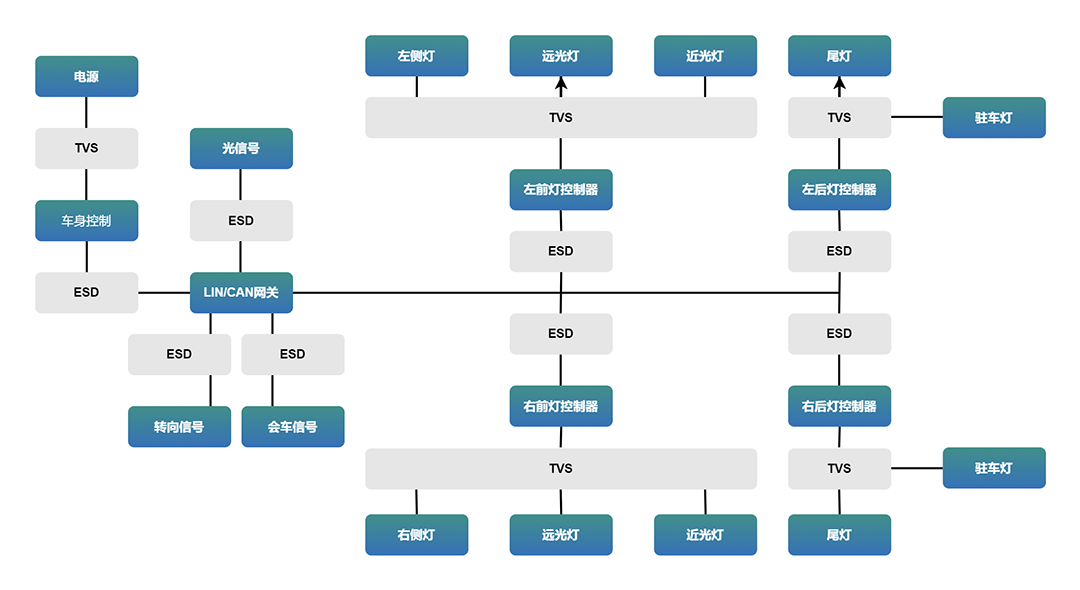
As one of the most important means of transportation for our daily travel, automobiles play a significant role in our daily life and work. To ensure that cars can operate normally in different temperature environments, manufacturers have extremely high requirements for automotive parts – the automotive-grade standard.
In the overall framework of a car, the lighting system is one of the important components. The external lighting system of a car mainly includes headlights, turn signals, fog lights, brake lights, taillights, parking lights and reverse lights. The internal lighting system includes various ambient lights and illumination lights. The primary functions of car lights are to provide illumination and signal indication, ensuring our daily travel safety.

TVS (Transient Voltage Suppressor Diode): It rapidly conducts transient overvoltages in the circuit, clamps the overvoltage at a lower level, and protects sensitive electronic components connected in parallel with it.
ESD (Electrostatic Discharge Protection Devices): They are used to prevent damage to circuits caused by static electricity. They quickly release static electrical charges to avoid damage to circuits such as LIN/CAN gateways and lamp controllers due to static accumulation, ensuring the normal transmission of signals and control functions.
Automobile headlamps have high requirements for multiple parameters of semiconductor discrete devices. The following are some of the main parameters:
The withstand voltage value: Semiconductor discrete devices need to have a sufficiently high withstand voltage value to ensure that they will not be broken down under various voltage conditions in the automotive electrical system, guaranteeing the safe and stable operation of the entire headlamp system.
Current carrying capacity: Some components of vehicle lamps require a large current to drive them to ensure that the headlights can achieve sufficient brightness. In addition, the devices also need to be able to withstand sudden large current surges, such as the inrush current when the headlights are turned on.
Current accuracy: To ensure stable brightness and consistent color temperature of vehicle lights, semiconductor discrete devices need to have high current accuracy. This prevents the lights from flickering or having uneven brightness.
Thermal resistance: When automotive lamps (especially high-power LEDs) are in operation, they generate a large amount of heat. Semiconductor devices require low thermal resistance to dissipate heat quickly and prevent the chip from overheating. At the same time, they need a high maximum operating temperature to ensure stable operation of the vehicle under all working conditions.
Response speed: The automotive lighting system needs to respond quickly to control signals (such as switching between high and low beams, and the flashing of turn signals). Semiconductor discrete devices need to respond at high speed to achieve rapid light switching, ensuring driving safety and functional requirements.
Product Recommendations
EXPSEMI provides customized automotive lighting solutions for well-known car manufacturers such as BYD, Geely, Chery and NIO. The high-temperature resistance of EP8100T and EP10100T makes them widely used in automotive headlamp solutions.

